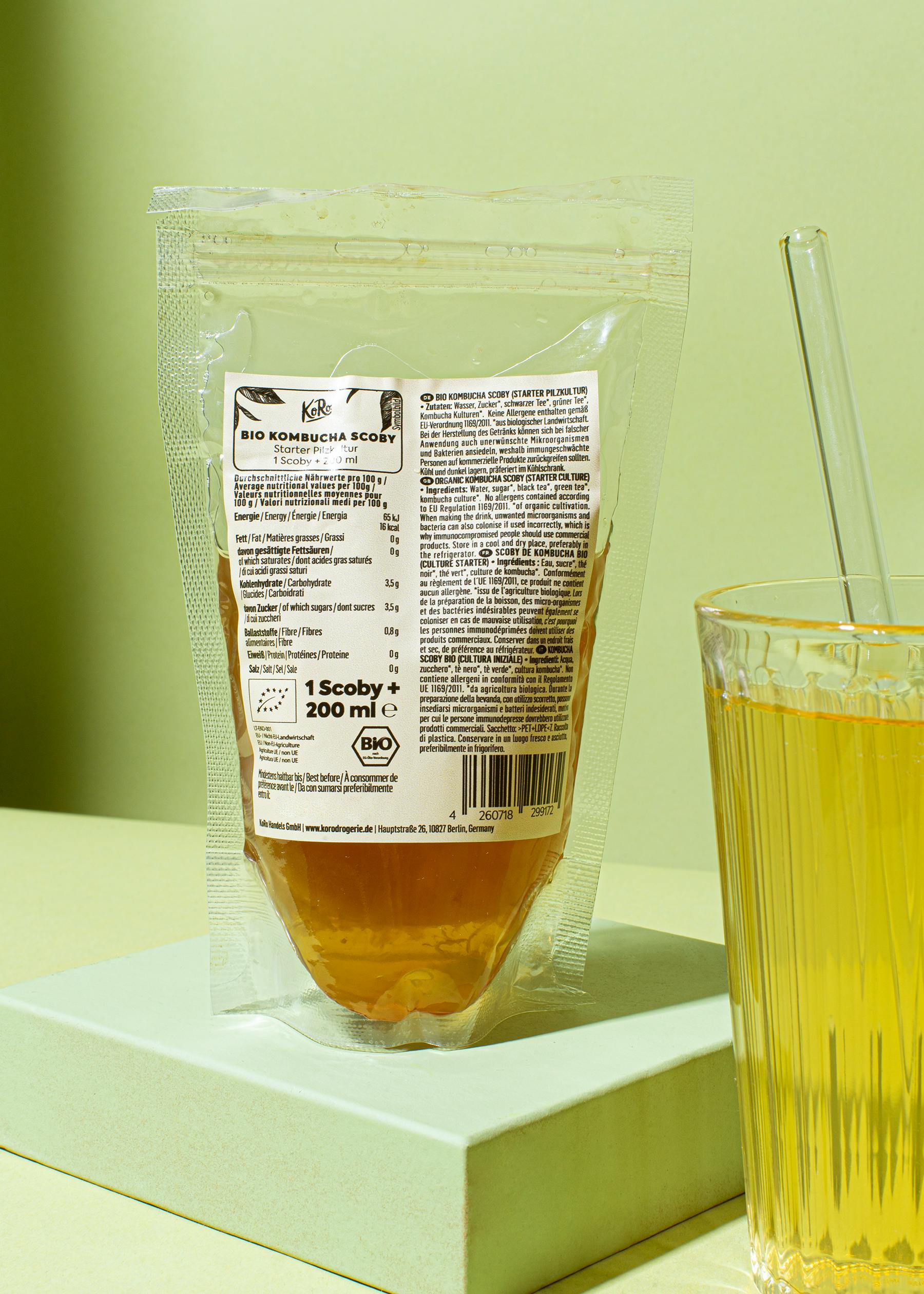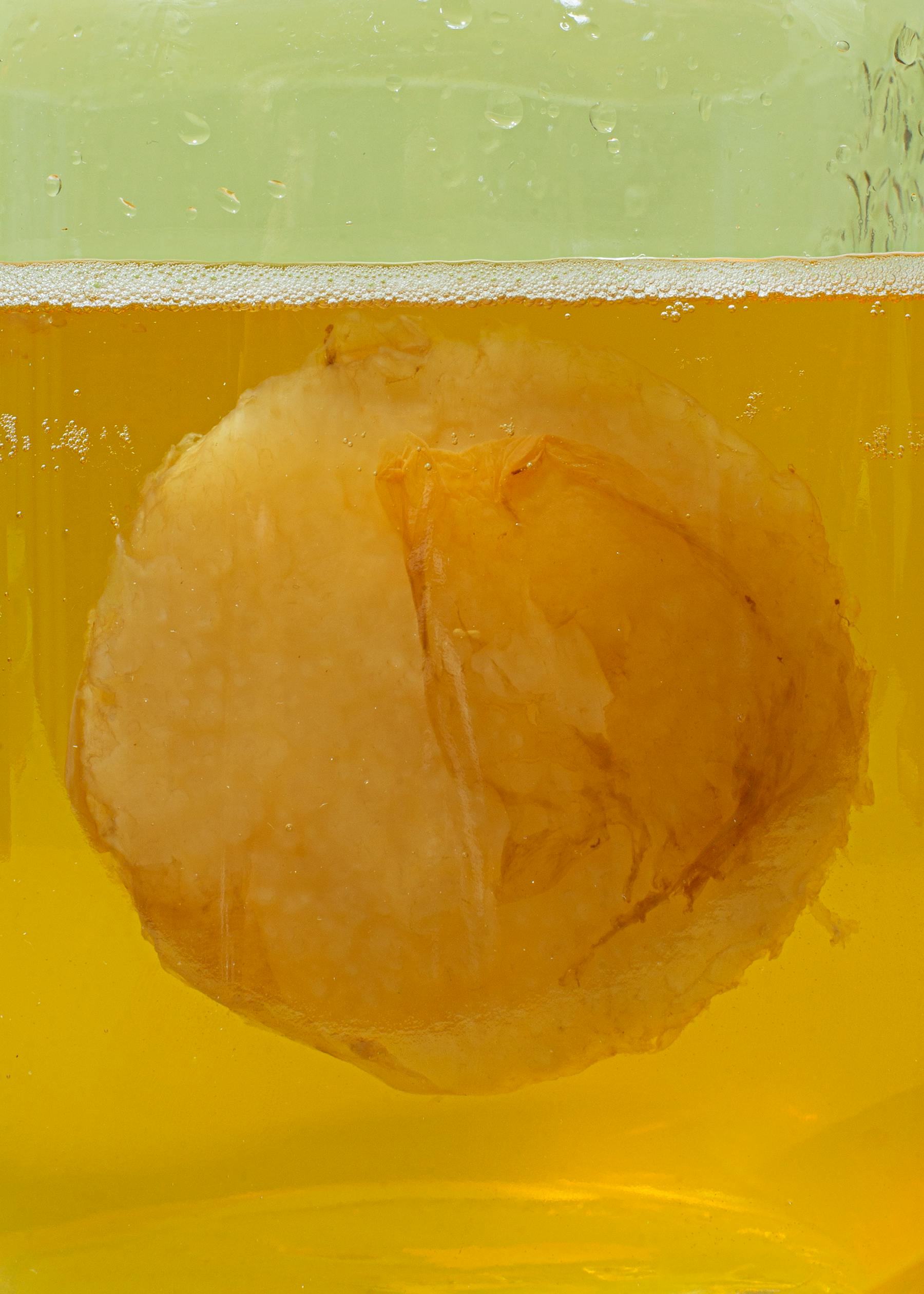Where does kombucha actually come from?
You either know kombucha from your grandparents or from the hipster café - there is no in between. Kombucha is now part of the must-have repertoire of hip bars - and like so many things there, it's still really vintage. The tea drink has a long history and comes from Japan or China. There is no consensus on the name: some say that something went wrong with the tradition and the drink was shipped across the ocean with the wrong name. Kombu means algae in Japanese and cha means tea. However, algae are not on the list of ingredients in kombucha. Another version says that a Chinese emperor commissioned an alchemist to bring him a drink for eternal life. The alchemist brought him kombucha. After years, he switched from kombucha to medication and died - whether the kombucha would have kept him alive remains a mystery. It is said to be a real miracle cure for illnesses and for a radiant appearance. But beware, all these positive effects have not been scientifically proven, and advertising the product as such is even prohibited!
Live bacterial cultures in the Scoby
Even without superpowers, we think kombucha is great. The special thing about our new favorite summer drink is probably the living bacteria and yeast cultures that are responsible for the drink's tingling sensation. It is also incredibly versatile thanks to its wide variety of flavors. Although kombucha is usually considered alcohol-free, it often contains a small amount of alcohol due to the fermentation process. But before you invest all your savings in kombucha - we have good news for you: you can make an infinite amount of kombucha yourself and the only investment is the scoby, which is responsible for the fermentation process and is absolutely affordable.
What is a scoby?
The scoby is often referred to as a mushroom, but it is not a mushroom in the true sense of the word. Translated, the name means symbiotic yeast and bacteria culture. The scoby is responsible for the fermentation process. Sugar is the fuel that causes it to turn your tea into kombucha. A total of three different fermentation processes take place. Alcoholic fermentation is responsible for the low alcohol content in the drink. Lactic acid fermentation explains the lactic acid bacteria in kombucha, but don't worry, it is still vegan. If you let your kombucha continue to ferment, it will even turn into vinegar after around 20 days with the help of acetic acid fermentation.
How to make kombucha yourself
Basically, all you need is sweetened tea and a scoby to turn it into a carbonated summer drink. Black or green tea works best. You can decide for yourself how sweet or sour you want your kombucha to be and even refine it afterwards. The longer you let your scoby ferment the tea, the more sugar is processed - so the kombucha becomes more sour.
Preparing kombucha at home
But enough rambling now. Let's finally put Sweet-Scoby to work!
The preparation is very simple: prepare your black or green tea as normal in a large glass container. We recommend our Japanese Sencha green tea, for example. Add plenty of (raw cane) sugar, don't worry, it won't stay in the kombucha but will serve as food for your scoby. Now it's time to cool down! Add plenty of cold water and, when your tea is only at room temperature, add your scoby and the brewing liquid from the packet in which your scoby arrives. That's actually all there is to it! Cover your container with an air-permeable cloth, place a household rubber band around it and wait. The Scoby needs time to ferment the tea into kombucha. After seven days, you can start tasting some of your own creation with a wooden spoon or glass straw past the Scoby. The kombucha will become increasingly sour over time as more sugar is converted. So if it is still too sweet for you, wait a few more days.
Once your kombucha has reached the perfect sweetness level for you, it's time to serve! It is best to pour the kombucha through a sieve into sealable glass containers, which you should store in the fridge. For the next round of fermentation, fill your scoby with some leftover drink in a new, freshly washed container and start the process all over again. However, if you want to take a break first, your Scoby can rest in the liquid in the meantime.
Have you got a craving but are a little lost with the list of ingredients? You can get everything you need in our Kombucha starter set delivered straight to your door with just one click!
Extra tips and tricks for your kombucha variations
In general, it is extremely important to ensure sufficient hygiene during fermentation. Detergent residues, bacteria or even metal (pure stainless steel is fine) can react with the acids in the scoby. Pesticides and additional flavors can also prevent your Scoby from working. Ideally, your tea should be certified organic and without flavor additives.
Would you like to give your kombucha an individual touch or increase the carbonation kick?
For more carbonation, you can leave your finished fermented drink at room temperature for a few days after you have placed the scoby in a new preparation liquid. The yeast will continue to work and provide the extra fizz. Make sure you open the bottle regularly to regulate the pressure.
For a personal touch, we recommend adding herbs or dried fruit to your kombucha. To do this, add the ingredients of your choice to the ready-made bottles. Our favorite: rose petals or ginger!

